Over the last several years, a quiet but significant shift has been unfolding in the independent advisory space. A growing number of small and mid-sized RIAs—many of them well-established firms with loyal clients and solid revenue—are choosing to relinquish their own registrations and tuck into larger platform RIAs.
It’s not a signal of failure. It’s a sign of change.
For many advisors, the core promise of independence remains intact: ownership, flexibility, and client alignment. But the operational realities of running a solo or boutique RIA—especially in a post-reg BI, tech-driven environment—are forcing a new calculation.
Below, we break down what’s driving this trend, and why more advisors are rethinking what independence actually means.
Compliance Complexity Has Outpaced Capacity
Even the most diligent advisors are finding that compliance obligations have become disproportionately time-consuming. The growth in SEC and state audits, evolving disclosure requirements, and marketing rule enforcement means that maintaining your own registration isn’t just a checkbox—it’s a full-time job.
For smaller firms without dedicated legal or compliance staff, the burden often falls on the advisor themselves, cutting directly into client time and growth efforts.
By joining a platform RIA, advisors can offload compliance oversight and supervision without giving up their client relationships or practice identity. It’s not about giving up control—it’s about reallocating time to what matters most.
Technology Expectations Keep Rising
Client expectations have changed. They now expect elegant digital experiences, seamless reporting, e-signature workflows, account aggregation, and proactive communication—all delivered in real time.
For a standalone firm, keeping up with this level of tech integration can be expensive and exhausting. Not just financially, but operationally—training staff, vetting vendors, managing data security, and ensuring integrations actually work.
Platform RIAs that invest in infrastructure at scale can offer access to institutional-grade technology—trading, billing, CRM, planning, reporting—at a fraction of the cost and complexity of DIY.
Staffing and Admin Support Are Becoming Decisive Factors
Back-office support can make or break the client experience. But for many solo and small-firm advisors, hiring and managing staff is a challenge—especially amid tight labor markets and rising salary expectations.
Joining a platform that offers operational support—client onboarding, account maintenance, custodian workflows, billing reconciliation, marketing compliance, etc.—allows advisors to stay focused on clients and growth, rather than internal personnel issues.
This trade-off is becoming more appealing for advisors in the $30–$200M AUM range, where staffing needs exist but may not yet justify full-time employees.
Succession Planning Isn’t a Future Problem—It’s a Present One
Even if retirement feels far away, advisors are starting to think more critically about what happens to their business in the event of an emergency or unplanned exit.
Having a platform with continuity protocols, potential successor pipelines, or buyout mechanisms in place offers confidence—for the advisor, their clients, and their families. It also protects firm value by ensuring a path forward that doesn’t require a scramble or fire sale.
Independence Doesn’t Always Mean Going It Alone
The idea that “true independence” requires a solo ADV is losing relevance. Advisors increasingly realize they can maintain ownership of their brand, retain autonomy in how they serve clients, and still gain operational scale—without needing to carry every license, vendor contract, or compliance responsibility themselves.
In short, independence isn’t defined by structure. It’s defined by control, flexibility, and client alignment. For many, joining a platform RIA enhances those things—not diminishes them.
The decision to close an RIA and tuck into a platform is not about stepping back—it’s often a strategic step forward. By offloading the operational weight and redistributing their energy toward growth, many advisors find that they’re able to operate more like a CEO and less like a compliance officer, tech coordinator, or HR manager.
As the regulatory, technological, and client-service bar continues to rise, small and mid-sized advisors are rethinking how to stay independent—without staying alone.
